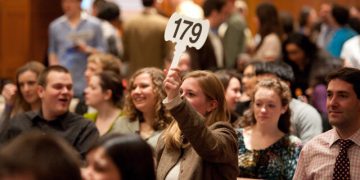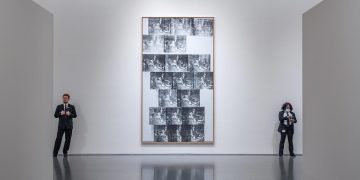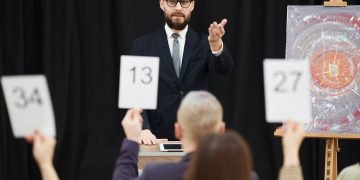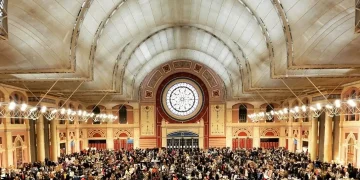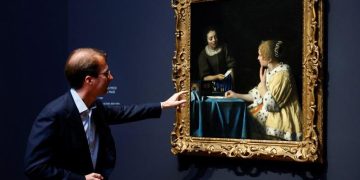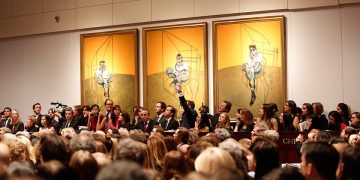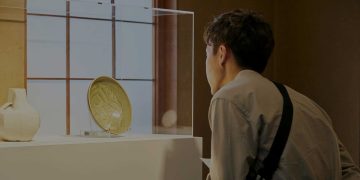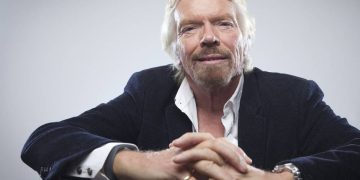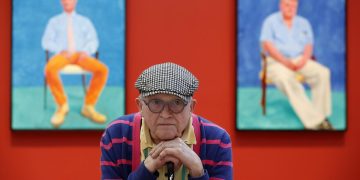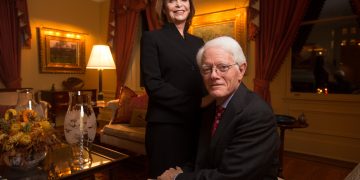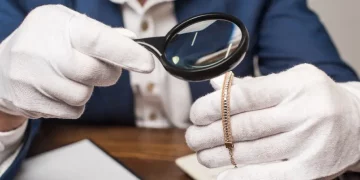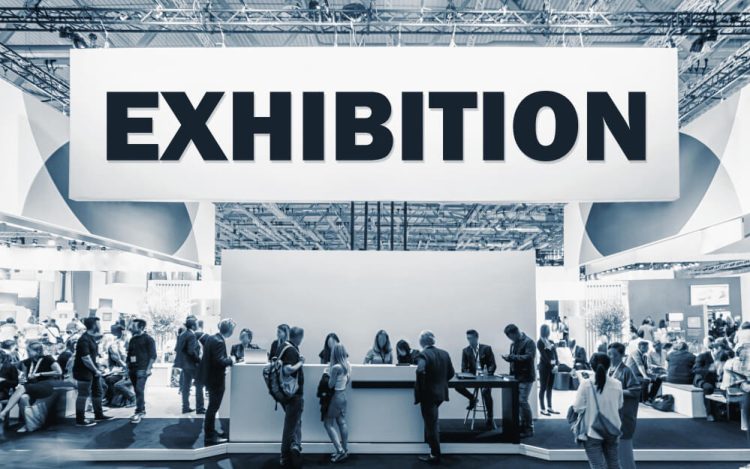In today’s collecting world, events are no longer just about browsing objects — they’re where decisions are made, alliances are formed, and markets quietly shift. Behind every great collection is a moment of exposure: an artwork seen before it became famous, a conversation that revealed a new category, a discovery that altered one’s direction completely.
As we enter the final quarter of 2025, several carefully curated events — from public-facing art salons to discreet, invitation-only gatherings — are poised to offer exactly that kind of transformative moment. Whether you collect 15th-century manuscripts, Bauhaus design, Islamic calligraphy, or emerging contemporary art, the following events deserve serious attention.
Each offers more than inventory — they offer access, intelligence, and the possibility of evolution.
1. Grand Palais Rare Works Salon — Paris, early September
Set beneath the vaulted glass ceilings of the Grand Palais, this salon is known for its depth in Old Master drawings, early printed books, and devotional European art. For 2025, the central thematic focus will be: “Unveiled Archives: Rediscoveries from European Family Holdings.”
Highlights are expected to include:
- A rare set of 16th-century Florentine anatomical studies attributed to the workshop of Andrea del Verrocchio.
- Newly surfaced marginalia-laden incunabula from a Benedictine archive in Eastern France.
- A series of early Netherlandish panel paintings, presented with full conservation reports and radiography.
Private collectors and museum scouts from France, Italy, and the Low Countries will attend, with several objects being made available through confidential private-treaty arrangements.
Why it matters:
For collectors focused on provenance, condition, and long-term historical relevance, this event provides an ideal convergence of scholarship and access. In a field where timing and trust are everything, this fair offers both — and often before auction catalogues even go to print.
2. Hong Kong Private Art Strategies Forum — mid-September
Hosted at a discreet venue in Central, this high-level forum is co-organized by two leading Asian private banks and a regional museum consortium. The 2025 edition will focus on cross-border acquisitions and preservation strategies in East Asia, with special panels dedicated to Tang Buddhist sculpture, Korean monochrome painting, and early 20th-century Chinese ink abstraction.
What sets this event apart is its structure: it is not a sales fair, but rather a secure, off-market knowledge exchange. Collectors, legal experts, conservators, and curators meet to review unpublished collections, prepare pre-acquisition dossiers, and discuss international movement protocols.
Confirmed preview materials include:
- Three Buddhist stone heads from Hebei province, exhumed in the 1930s and held privately since.
- A 1927 ink-on-paper scroll by Qi Baishi, never before exhibited.
- A reconstructed ledger of confiscated Japanese ceramics from a postwar Kyoto estate.
Why it matters:
Collectors gain unparalleled access to objects still under review, along with insight into legal and ethical risks associated with emerging provenance challenges. More importantly, the relationships formed here often lead to longer-term institutional collaborations.
3. The Chicago Object Symposium — late September
Unlike traditional fine art fairs, the Chicago Object Symposium focuses on the underappreciated: scientific instruments, tools, maps, furniture, and archival materials. It attracts collectors, museum technicians, and design historians.
This year’s theme: “The Useful Object as Cultural Record”, featuring interactive presentations on:
- Early American marine chronometers and whaling devices
- Optical instruments from the early Enlightenment period
- Rare Civil War field documents, maps, and coded correspondence
Attendees can examine materials directly, under curator guidance, and engage in detailed technical sessions on restoration and documentation. A rare bonus: several working collectors will present pieces from their own holdings, inviting discussion and informal valuation.
Why it matters:
If you collect “material history” — objects with scientific, industrial, or anthropological significance — this is a high-concentration environment of knowledge and opportunity. The crossover between technology, design, and historical narrative is one of the fastest-growing categories in private collecting today.
4. Abu Dhabi Legacy Acquisitions Fair — early October
In the Gulf, collecting is not only an aesthetic practice — it is part of a cultural investment strategy. The Abu Dhabi Legacy Acquisitions Fair is now one of the premier private-access events for collectors of Islamic art, manuscripts, textiles, and early architectural ornamentation.
This year’s focus is particularly rare: “Andalusian Memory: Reassembling Fragments of Al-Andalus” — a curated selection of manuscripts, Qur’anic calligraphy, ceramic fragments, and illustrated treatises from 10th to 14th century Spain.
Notable previews include:
- A Kufic script Qur’anic folio from Toledo, 950s
- Intricately glazed tiles from a known Nasrid architectural site
- Fragments of a lost astronomical treatise by Ibn al-Zarqali
Museums from the UAE, Saudi Arabia, and North Africa are expected to send acquisition teams, with several foundations offering matching grants for co-acquisition projects.
Why it matters:
The momentum in Islamic cultural heritage is significant, with private collections playing a vital role in recovery, documentation, and exhibition. For collectors with an interest in scholarship or regional impact, this fair offers both immediate access and long-term cultural partnership potential.
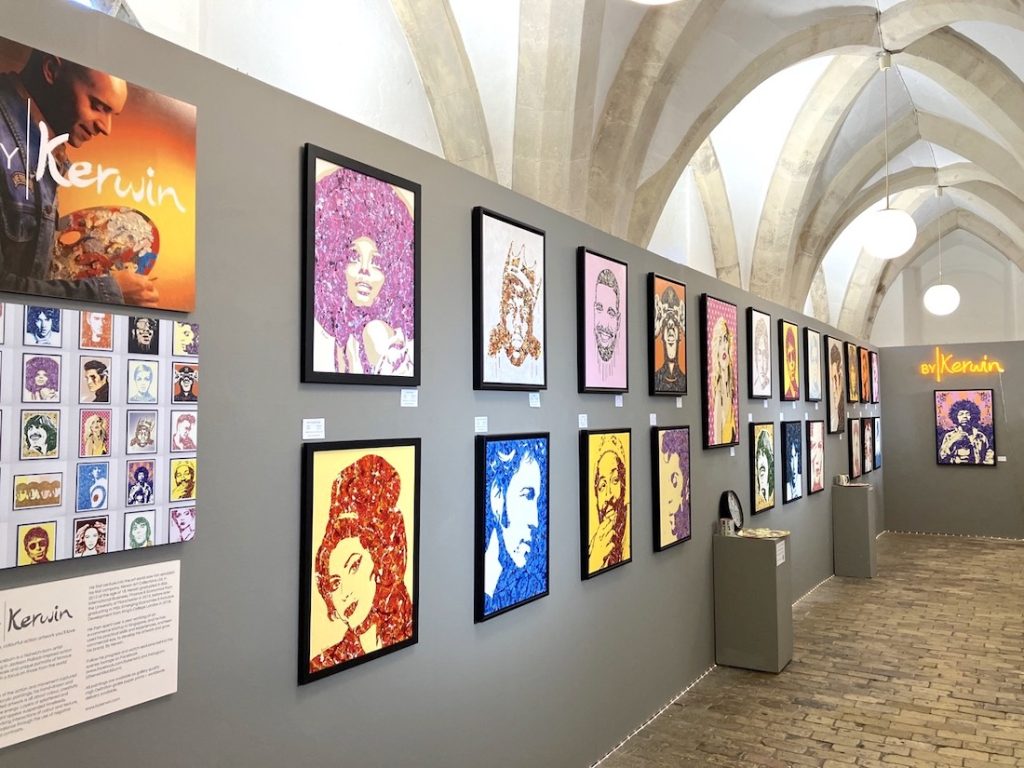
5. São Paulo Contemporary Focus — mid-October
This fair has grown rapidly in recent years and is now considered Latin America’s most serious platform for collectors of postwar and contemporary art. In 2025, the curatorial framework is built around “Decolonizing the Archive: Afro-Brazilian Art and Memory.”
Core features include:
- A section devoted to anonymous community-based textile work from Bahia, 1930s–1960s
- Private archives of Afro-Brazilian photographers and cultural activists
- Works by Rosana Paulino, Abdias do Nascimento, and contemporary experimental artists
Leading institutions from Mexico City, Buenos Aires, and New York are sending curators to scout new acquisitions. Expect sharp price rises in newly recognized historical work and long-term partnerships forming between collectors and community-driven galleries.
Why it matters:
This is not simply about art buying — it’s about shaping cultural memory. The fair invites collectors to act not just as owners but as stewards and partners in visibility, research, and repatriation. For the socially conscious and future-oriented, it’s the right place at the right time.
6. Bellgrave Institute Discovery Preview — late October
One of the most confidential events on the European collecting calendar, the Bellgrave Discovery Preview is not publicly announced. It operates by direct invitation only, with attendance capped at 60 participants: senior collectors, collection advisors, museum curators, and a few independent scholars.
Objects shown are usually in a state of flux: unattributed, unpublished, or in need of conservation and research. Participants are encouraged to contribute expertise, propose attributions, or join as silent co-acquirers. A small number of objects are made available for purchase under exclusive, off-market terms.
Expected inclusions this year:
- An unsigned Venetian oil sketch, possibly by Palma il Giovane
- A Gothic choirbook fragment with early notational variants
- An engineering manuscript detailing mechanical clockworks circa 1480, France
Why it matters:
This is where collections are built not by price, but by eye, knowledge, and judgment. For those ready to engage at a scholarly and strategic level, this forum offers unparalleled access to both objects and minds — before the rest of the market even knows what’s surfaced.
Conclusion: These Events Are Not Just Markets — They’re Turning Points
Whether your interest lies in early Islamic geometry, South American modernism, or Renaissance draftsmanship, these events are more than dates on a calendar. They are moments of concentrated potential — chances to access material not yet seen by the wider world, to learn what institutions are prioritizing, and to reshape your role in the cultural landscape.
For collectors serious about expanding their vision, refining their purpose, or moving from passive acquisition to active contribution, these are the rooms to be in.
The next piece that defines your collection may not be in a catalog yet. But it will be on a table, in a quiet viewing room, under the careful hands of someone who knows what they’re doing.


